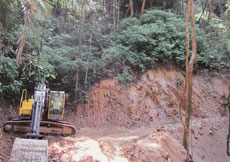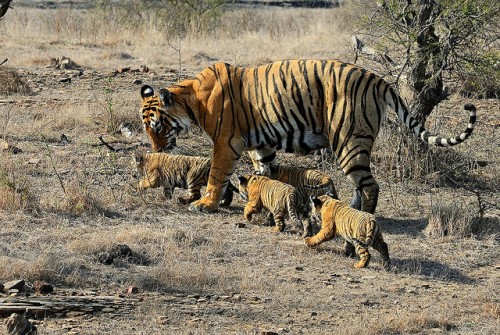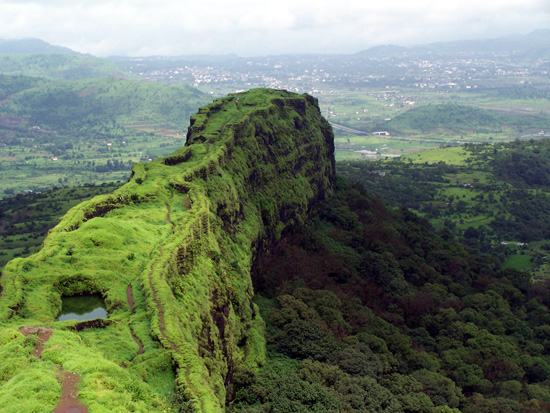Power generation at what cost?

The government of Karnataka has sanctioned 72 mini hydel projects, in the heart of Western Ghats, to meet the ever growing needs of electric power. But even if the projects are tagged ‘mini- hydel ’, a large number of trees are being removed, to make way for these power projects. The biodiversity loss will be irrevocable.
Though the sanctioned land for these projects is 1000 hectares, in the very process and by the time the projects are commissioned, 12000 hectares of forest land would have been affected.
The large scale tree felling and deforestation will impact the lives of several animals like, the tree dwelling lion tailed macaques, giant squirrel of the Malabar, tigers and elephants. The flora and fauna of the Western Ghats are already seriously affected by the existing projects owing to the existence of two railway lines, three national highways, electricity transmission towers and lines, and HPCL pipe lines.
According to wildlife experts, the disruption, devastation is not restricted to terrestrial life but extends to aquatic wild life as well.
Praveen Mahajan, a member of the ‘Aranya wildlife Trust’ an NGO, expressed doubt if these mini-hydel projects are green energy at all. He said, “Though vast tracts of woodland are not submerged, as required in setting up large power plants, mini hydel projects are ecological disasters unto themselves. Twenty of these projects have already been commissioned, and their impact on the forests and wildlife has been monstrous.”
Call it a Technical Loop Hole
Under the law, small projects are exempt from environment impact assessment. This has allowed the Karnataka renewable energy development limited to promote 72-hydel projects classified as ‘Green energy schemes” with the stated purpose of carbon foot print reduction. Look closely and you will find that the magnanimity of the projects and the mass destruction they are causing to the forest lands is the same, only instead of one big project, they have been divided into many small hydel projects.
Projects with proposed generation capacity of 25 MW and above needs clearance from union government and green signal from environment department. So the projects were split as two components just to escape the clause and thus make them eligible for government sanctions, in the same location!
” To escape this clause, the projects were split into two components and permission taken from the state government for two separate projects in the same location,” Mahajan alleged.
Future Threats
Water Scarcity
Hydel projects necessarily rely on water sources like rivers and streams flowing within the Western Ghats. In the catchment area of Nethravathi River alone, 27 mini-hydel projects are sanctioned. The river beds would be starved of water in summer once these projects are commissioned and for sure this will affect both aquatic and terrestrial life.
Threatening life of animal and plant species
Cutting down of mature, young trees to construct roads will result in losing the rare animal species. In the fresh waters of Western Ghats, the scientists in the last three years have discovered 14 species of frogs, one of fish and 5 species of insects. The indifferent attitude of the forest department is cause for concern as they are supposed to be the custodians of virgin forests. I.B. Shrivastava, Karnataka’s chief conservator of forests expressed helpless ness, saying these projects adhere to environmental laws and the concerned agencies and departments have given their consent.
Mahajan expressed worries that laying of roads would entail use of explosives for blasting and this will seriously impact and disturb wildlife in the area. He said “The power lines further fragment wildlife habitats. Tree dwelling species such as lion-tailed macaque, flying squirrel, flying snake and Malabar giant squirrel will bear the brunt of this disruptive activity. These species need a contiguous tree canopy for migration”.
Habitat destruction and Deforestation are a given with massive felling of the trees.
It is a paradox that the government on one hand is in association with wild life organisations to preserve forests and wild life, and on the other hand sanctioning projects in the name of development that is detrimental to the environment.
– Freelance Contributor






4 thoughts on “‘Mini’ Hydel Projects threatening Biodiversity Hotspot of the World”